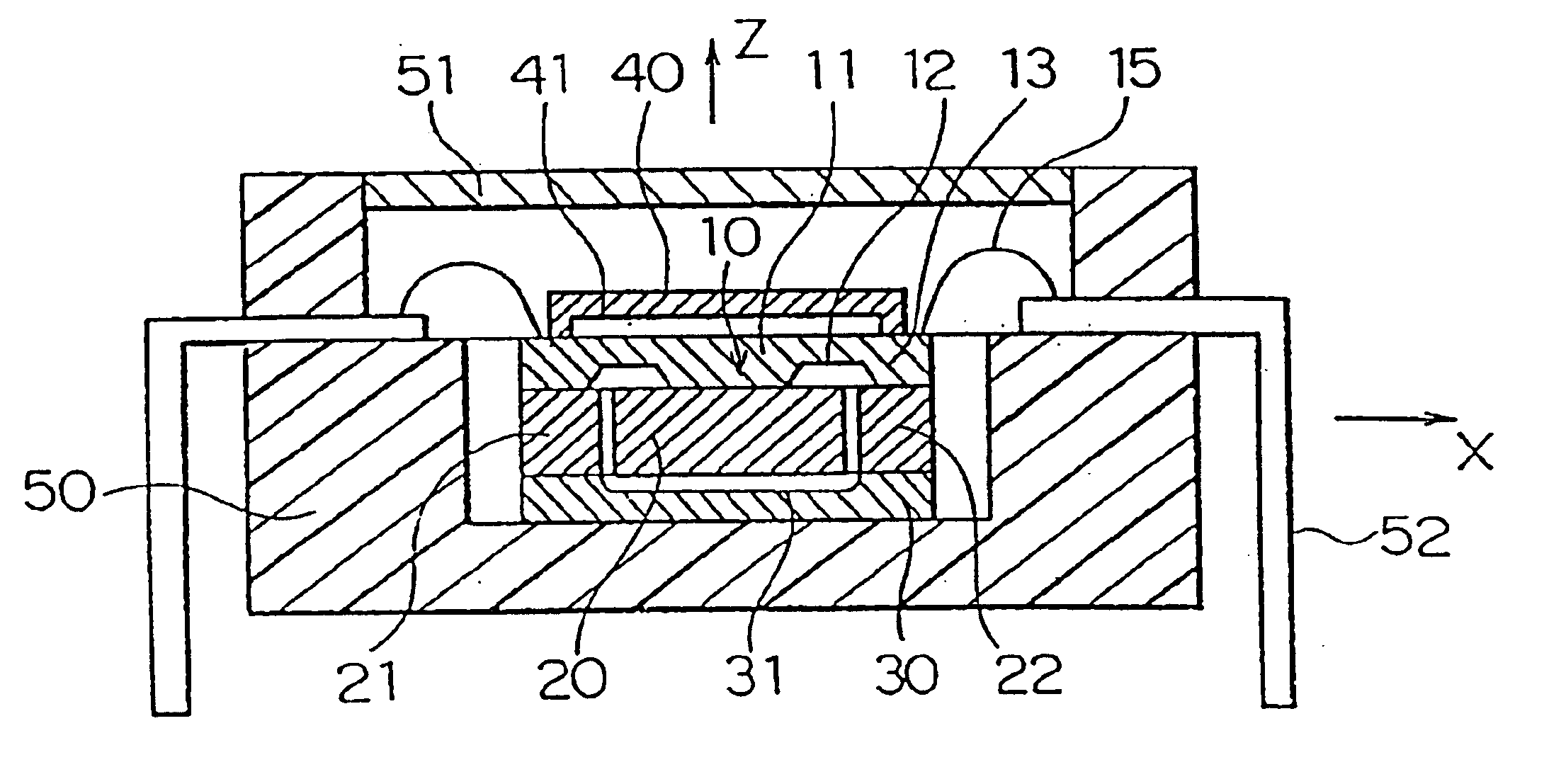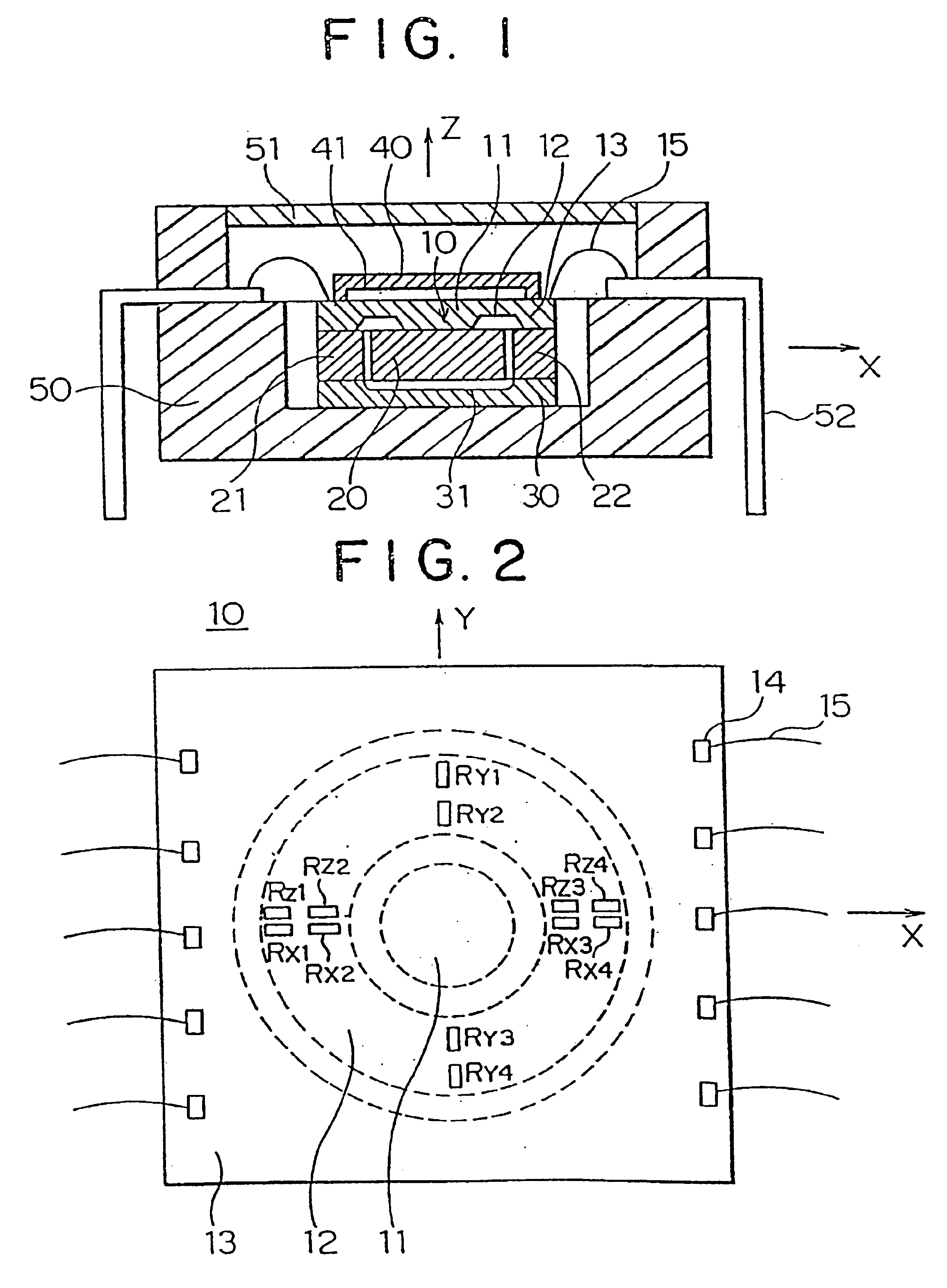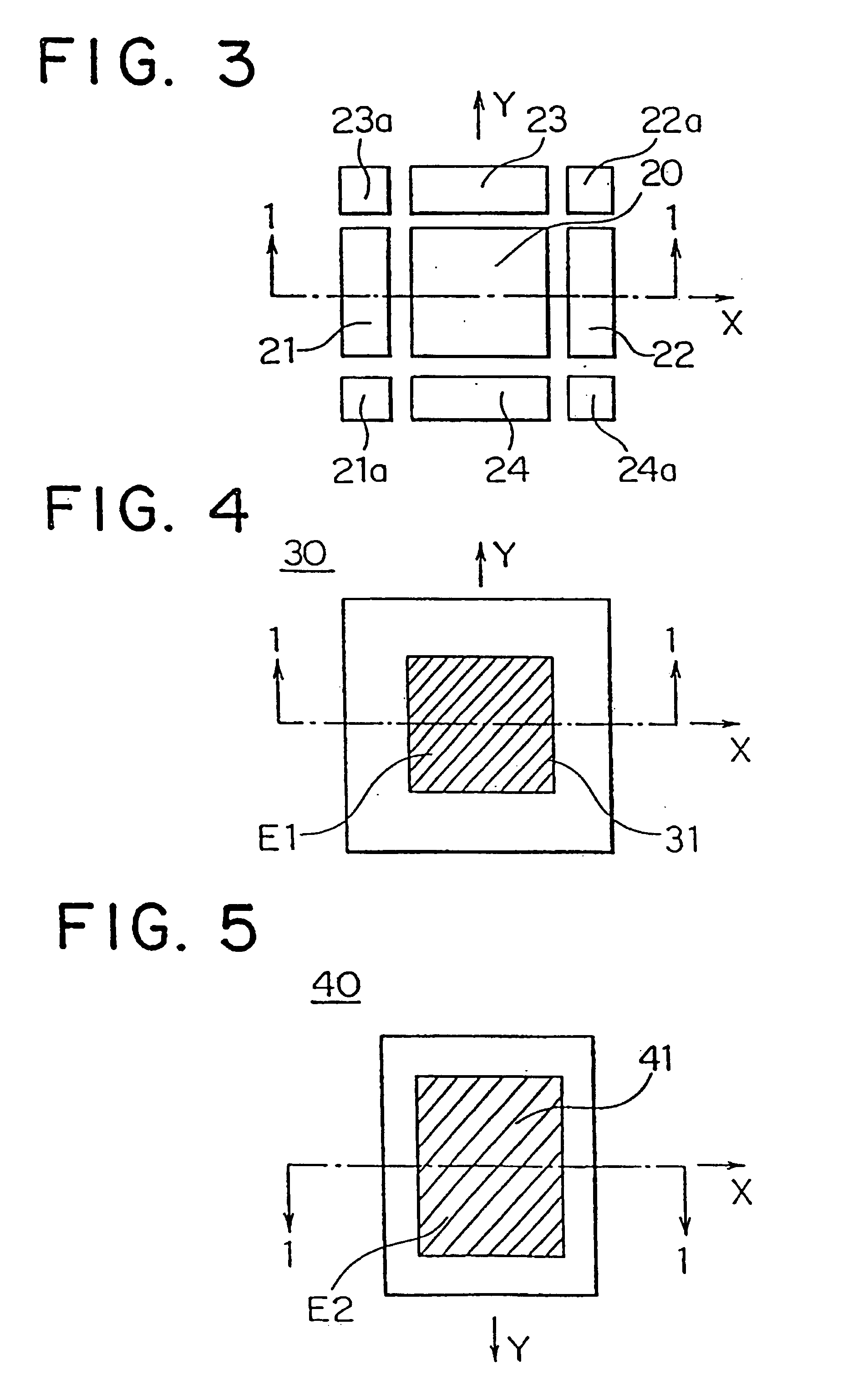Method of testing a sensor
a sensor and sensor technology, applied in the field of method of testing a sensor, can solve the problems of reducing the reliability of measured values, affecting the test accuracy of acceleration sensors or magnetic sensors, and interference in the output characteristic with respect to respective axial directions
- Summary
- Abstract
- Description
- Claims
- Application Information
AI Technical Summary
Benefits of technology
Problems solved by technology
Method used
Image
Examples
Embodiment Construction
§1 Basic Structure of the Sensor
1.1 Structure of the Acceleration Sensor
This invention can be widely applied, in general, to an apparatus for detecting a physical quantity exerted as an external force, and can be utilized not only to a force sensor but also to an acceleration sensor, or a magnetic sensor. In other words, all sensors are common in the basic structure of the central portion thereof. Accordingly, the object to which this invention is applied will be briefly described by taking an example of an acceleration sensor.
FIG. 1 is a structual cross sectional view showing an example of an acceleration sensor. The component serving as the central unit of this sensor is a semiconductor pellet 10. In this example, a single crystal substrate of silicon is used. The top view of the semiconductor pellet 10 is shown in FIG. 2. The cross section of the semiconductor pellet 10 shown at the central portion of FIG. 1 corresponds to the cross section cut along the X-axis of FIG. 2. This se...
PUM
| Property | Measurement | Unit |
|---|---|---|
| force | aaaaa | aaaaa |
| flexible | aaaaa | aaaaa |
| voltage | aaaaa | aaaaa |
Abstract
Description
Claims
Application Information
 Login to View More
Login to View More - R&D
- Intellectual Property
- Life Sciences
- Materials
- Tech Scout
- Unparalleled Data Quality
- Higher Quality Content
- 60% Fewer Hallucinations
Browse by: Latest US Patents, China's latest patents, Technical Efficacy Thesaurus, Application Domain, Technology Topic, Popular Technical Reports.
© 2025 PatSnap. All rights reserved.Legal|Privacy policy|Modern Slavery Act Transparency Statement|Sitemap|About US| Contact US: help@patsnap.com



